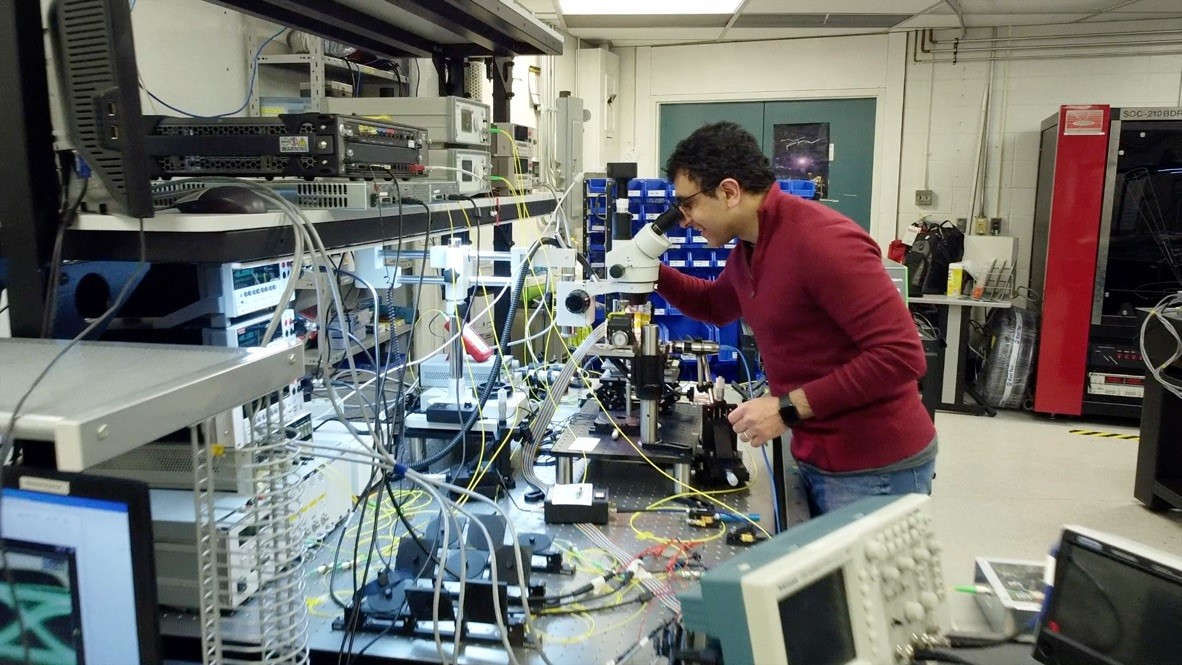His interdisciplinary work combines silicon photonics and machine learning to build photonic integrated circuits for computing. It provides a framework for a new class of information processing machines that use light instead of electronics and mimic, in a basic way, the neural networks that allow humans to process information and make decisions. This novel approach to neuromorphic computing was published in the prestigious journal, Nature Photonics in early 2021″.
“We take inspiration from the brain,” says Shastri, an assistant professor of Engineering Physics at Queen’s.
His pioneering efforts were recently recognized with the International Society for Optics and Photonics (SPIE) Early Career Achievement Award. The SPIE says Shastri is opening new frontiers for artificial intelligence and brain-inspired computing.
His goal is to develop a new type of photonic computing that is faster, more adaptive, interconnected, and energy efficient.
Artificial intelligence (AI) algorithms are currently implemented in software on standard digital computers, which makes them very power-hungry. Training a single AI model can emit as much carbon as five cars would in their lifetime, according to a recent study. “It is a very inefficient way of implementing neural networks,” Shastri says.
He is pursuing an alternative using hardware.
‘I am very grateful to CMC for all the support, especially for the access to the multi-project wafer runs at foundries for our chip’s fabrication’
Shastri is working on hardware-based AI – neuromorphic processors that hold the potential to work six orders of magnitude faster than conventional electronic processors while consuming much less energy.
In the short and medium-term, neuromorphic photonic processors could provide intelligent signal processing.
In the long term, neuromorphic photonic computing could lead to breakthroughs in fundamental physics, or advances in understanding the mysteries of the human brain, says Shastri.
A graduate of McGill University, he spent seven years at Princeton University and in 2017 co-authored the first textbook in the field, Neuromorphic Photonics. He was supported by NSERC and Banting Postdoctoral Fellowships at Princeton. He returned to Canada in 2018, taking a position at Queen’s.
Many groups around the world are exploring neuromorphic computing.
“What sets our group apart is that we do large-scale integration of photonic integrated circuits to make optical neural networks. We are developing all these technologies that can be used in an optical computing platform.”
He says CMC has been critical to his success.
“I am very grateful to CMC for all the support, especially for the access to the multi-project wafer runs at foundries for our chip’s fabrication. That, coupled with access to the software tools and support from engineers, has been instrumental in advancing our research,” says Shastri.
May 2022
Photo Credit: Bhavin Shastri

